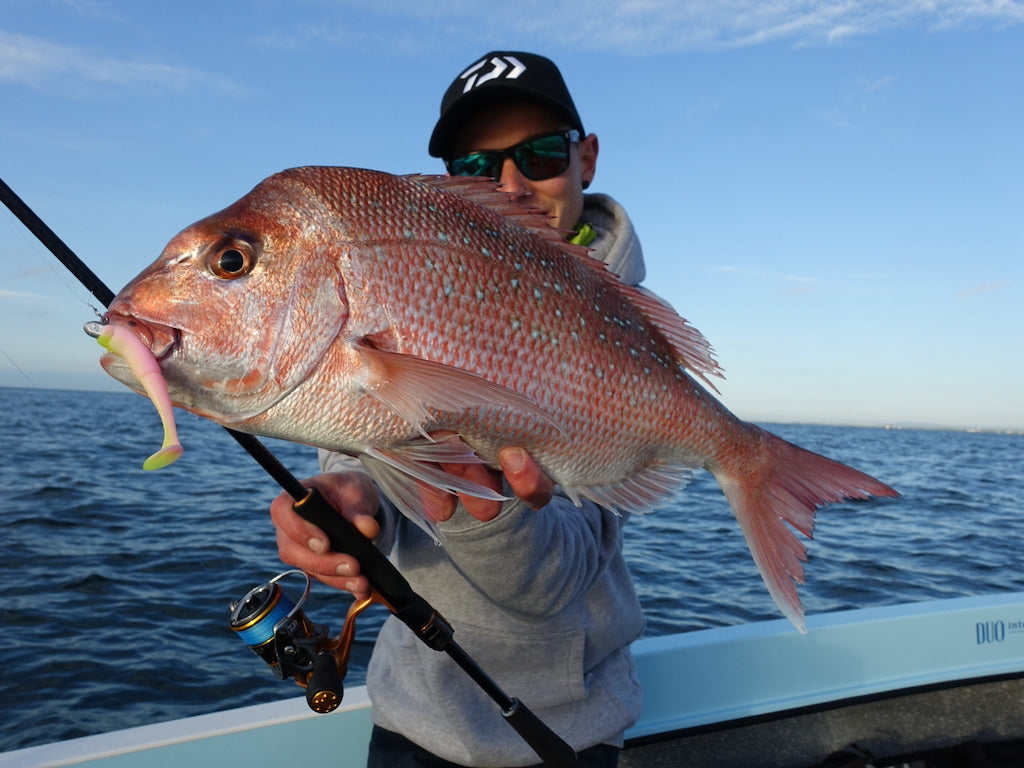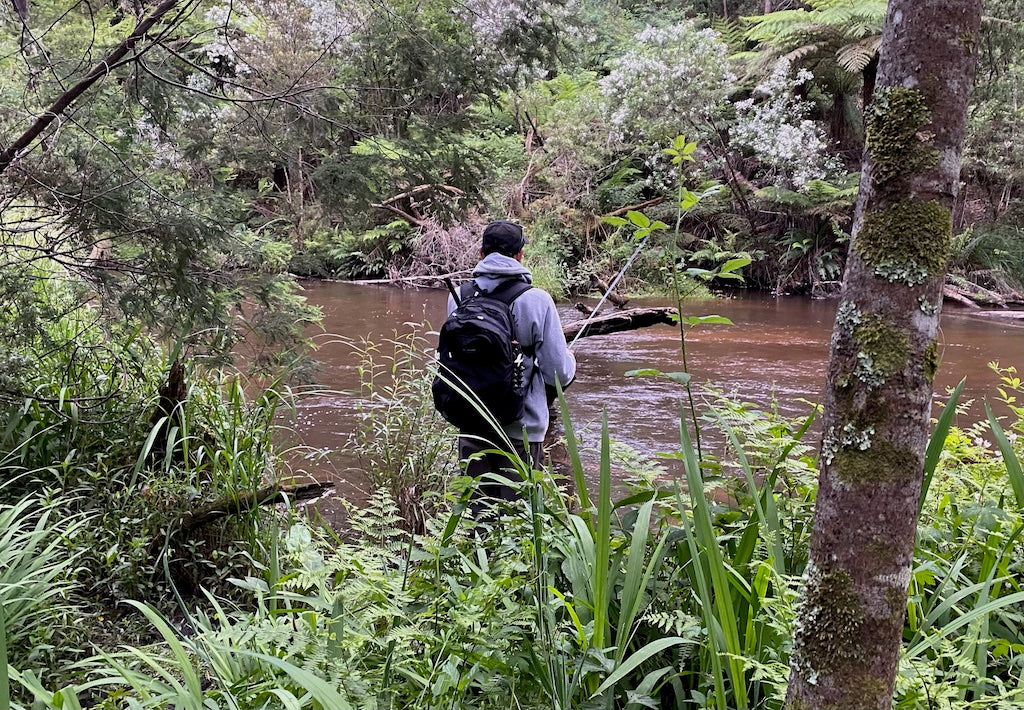How to Pick Your First Outfit
By Jesse Rotin
For anyone new to fishing, picking your first outfit can be exciting but also a little intimidating, however, this doesn’t need to be the case. There are some key features to look out for that will help you find the right setup. The answer to finding the right outfit will depend on two factors, one is location and the other is the species you’re likely to encounter.

Freshwater Fishing
Nowadays, most of our waterways are either stocked or booming with natural populations of freshwater species, which is great for beginners to get started and learn the fundamentals of fishing. Setups are light and can be used on an array of sweet water targets, such as Trout, Redfin, Bass, Golden Perch and many more. 1-2kg or 2-4kg rods are perfect as they’re light enough to cast unweighted baits, flick small lures and also enable you to steer fish in. Choosing a rod length is simple and usually something between 6-7ft is ideal but can alter to suit the locations you’re focusing on.
If you’re wanting to start your explorations around rivers and streams, then I recommend selecting a rod which is shorter in length. In return this will aid in more accurate casts and also lower the chances of getting caught in trees and other overhead vegetation. However, if Lakes and Dams have attracted your attention, then steering towards a rod which is longer in length will increase casting distance, allowing you to cover more water and find fish quicker. Reels around 2000-2500 sizes will stop even the biggest of freshwater species but are still light enough to enable an angler to be mobile and cover a range of locations.

Line can vary in size and material but remember this is what’s connecting you to the fish and the aim is to keep it as light as possible. Braid, Monofilament and Fluorocarbon can all be used as a mainline. For someone starting out, Monofilament or Fluorocarbon is great as it eliminates the use of a leader knot and in some circumstances, especially in clear water, makes your presentation appear more natural. Generally speaking, a line somewhere between 6-12lb will set you right. Personally, I like to run 8lb as it is a good halfway size which gives me the ability to muscle big fish in but isn’t too heavy.
My Gear
Small Tight Water Streams
* TD Hyper 603LFS/Luvias 2000S
*J-Thread Nylon 6/8lb
Lakes, Big Rivers and Dams
*TD Zero 702LS/TD Kix LT 2500LT
*J-Braid Grand Island Blue 8lb J-Thread Fluorocarbon 8lbSaltwater Shore Fishing
Australia is surrounded by endless coastline which is teeming with a variety of species including the likes of Snapper, Australian Salmon and Flathead just to name a few. Wetting a line in the salt is quite easy and the list of locations is limitless. Piers, wharves, break walls or even surf beaches are all happy hunting grounds for an angler to start their adventures.

As a rule of thumb the longer the rod, the further the cast, so it makes sense to use rods greater than 9ft in length (something between 10-12ft). An added advantage to using longer rods is the clearance you gain to avoid any snags and helps to keep your line up over crashing waves. Rods around the 6-10kg mark are run of the mill. When it comes to choosing a reel, the two main features to look out for are line storage and a decent drag. 4000-6000 size reels will hold plenty of line, allowing leeway between you and the fish, even once a long cast has been made, and a smooth but strong drag will assist in slowing a big fish down while helping to easily retrieve and remove kelp or any undesirables. 8-10kg mainline is perfect and a heavier leader can be added when chasing larger species or fishing around rocks or other hazards.
My Gear
* Sensor Sandstorm 1002M/Procargo SS5000
* J-Braid Grand Multicolour 20lb
* J- Thread Type N Nylon leader 30lb
Bay Boating
That new boat feeling is special, you spend endless hours planning the best way to set it up, just itching to get out on the water the next chance you get. No matter the size or shape of your boat, organisation is the key to a smooth days fishing. Just like boat preparation, fishing tackle should be no different and arranged at the ready for whatever species you may come across.
The ever reliable 2-4kg outfit is hard to beat when you’re likely to encounter a multitude of species like Snapper, Australian Salmon, Whiting, Flathead, Trevally and Squid, which are the most frequent captures within our bays and estuaries. However, if you’re aiming to predominately target bigger bay dwellers, like Yellowtail Kingfish and Snapper with large bait, switching to a 3-6kg outfit will be better suit to your needs.

In my view, a 2-4kg rod (something between 6’6-7’6ft) paired with a 2000-2500 size reel is unmatched as it gives you the ability to be casting lures at Snapper one minute to dropping a bait for Whiting the next. 8-12lb mainline is great and I prefer Braid in these situations. The reasons for this are simple, as braid has next to no stretch which aids in times of strong current and detecting bites in a stiff breeze. However, if Braid isn’t for you, then Monofilament or Fluorocarbon will certainly work too. Leader size will vary and you can’t go wrong with something between 8-12lb but It certainly won’t hurt to keep some 15-20lb leader on hand, as you never know when a school of hungry kingfish or marauding Tailor may show up.
My Gear
* Rebellion 681ML+FS /TD Sol 3 2500LT
* J-Braid Grand Island Blue 8lb
* J-Thread Fluorocarbon leader 8-12lb


